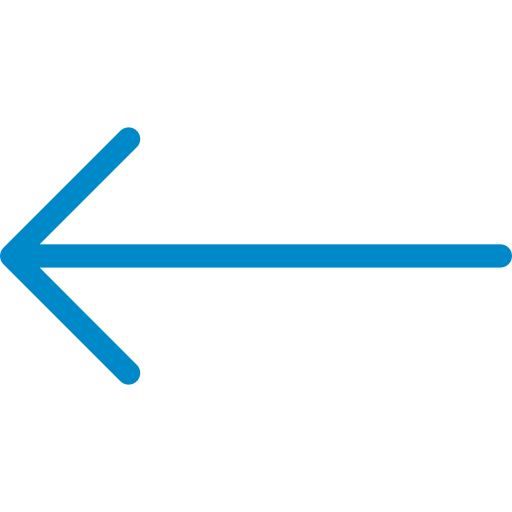GATE Computer Science Engineering Syllabus
Home / GATE / GATE Computer Science Engineering Syllabus
The GATE CSE syllabus comprises several important subjects, including Programming and Data Structures, Algorithms, Theory of Computation, Computer Organization and Architecture, Operating Systems, Databases, Computer Networks, and Software Engineering. These subjects cover various topics such as arrays, linked lists, trees, graphs, sorting, searching, automata theory, computer arithmetic, pipelining, memory hierarchy, process management, deadlock, database design, normalization, network layers, protocols, and software design.
GATE Computer Science Engineering Syllabus
- Engineering Mathematics
- General Aptitude
- Digital Logic
- Computer Organization and Architecture
- Programming and Data Structures
- Algorithms
- Theory of Computation
- Compiler Design
- Operating System
- Databases
- Computer Networks
Discrete Mathematics
Propositional and first-order logic. Sets, relations, functions, partial orders, and lattices. Monoids, Groups. Graphs: connectivity, matching, coloring. Combinatorics: counting, recurrence relations, generating functions.
Linear Algebra
Matrices, determinants, a system of linear equations, eigenvalues and eigenvectors, LU decomposition.
Calculus
Limits, continuity, and differentiability. Maxima and minima. Mean value theorem., Integration.
Probability and Statistics
Random variables. Uniform, normal, exponential, Poisson, and binomial distributions. Mean, median, mode, and standard deviation. Conditional probability and Bayes theorem.
QUANTITATIVE APTITUDE
Data interpretation: data graphs (bar graphs, pie charts, and other graphs representing the data), 2- and 3-dimensional plots, maps, and tables Numerical computation and estimation: ratios, percentages, powers, exponents, and logarithms, permutations, and combinations, and series Mensuration and geometry Elementary statistics and probability.
ANALYTICAL APTITUDE
Logic: deduction and induction, Analogy, Numerical relations, and reasoning
VERBAL APTITUDE
Basic English grammar: tenses, articles, adjectives, prepositions, conjunctions, verb-noun agreement, and other parts of speech Basic vocabulary: words, idioms, and phrases in context Reading and comprehension Narrative sequencing
SPATIAL APTITUDE
Transformation of shapes: translation, rotation, scaling, mirroring, assembling, and grouping Paper folding, cutting, and patterns in 2 and 3 dimensions
Boolean algebra. Combinational and sequential circuits. Minimization. Number representations and computer arithmetic (fixed and floating point).
Machine instructions and addressing modes. ALU, data path, and control unit. Instruction pipelining, pipeline hazards. Memory hierarchy: cache, main memory, and secondary storage; I/O interface (interrupt and DMA mode).
Programming in C. Recursion. Arrays, stacks, queues, linked lists, trees, binary search trees,
binary heaps, graphs.
Searching, sorting, hashing. Asymptotic worst-case time and space complexity. Algorithm design techniques: greedy, dynamic programming, and divide‐and‐conquer. Graph traversals, minimum spanning trees, shortest paths.
Regular expressions and finite automata. Context-free grammar and push-down automata. Regular and context-free languages, pumping lemma. Turing machines and undecidability.
Lexical analysis, parsing, syntax-directed translation. Runtime environments. Intermediate code generation. Local optimization, Data flow analyses: constant propagation, liveness analysis, common subexpression elimination.
System calls, processes, threads, inter‐process communication, concurrency, and synchronization. Deadlock. CPU and I/O scheduling. Memory management and virtual memory. File systems.
ER‐model. Relational model: relational algebra, tuple calculus, SQL. Integrity constraints, normal forms. File organization, indexing (e.g., B and B+ trees). Transactions and concurrency control.
Concept of layering
OSI and TCP/IP Protocol Stacks; Basics of the packet, circuit, and virtual circuit switching; Data link layer: framing, error detection, Medium Access Control, Ethernet bridging;
Routing protocols
shortest path, flooding, distance vector, and link state routing; Fragmentation and IP addressing, IPv4, CIDR notation, Basics of IP support protocols (ARP, DHCP, ICMP), Network Address Translation (NAT); Transport layer: flow control and congestion control, UDP, TCP, sockets; Application layer protocols: DNS, SMTP, HTTP, FTP, Email.
GATE Computer Science Engineering S Subject Wise Weightage
The subject-wise weightage for the GATE CSE exam varies each year. However, Programming and Data Structures is given the highest weightage of 12-13 marks, followed by Algorithms (8-9 marks), Theory of Computation (7-8 marks), Computer Networks (7-8 marks), Operating Systems (7-8 marks), and other subjects. Therefore, candidates need to prepare well and have a thorough understanding of each subject to perform well in the exam.
| Subject | 2012 | 2013 | 2014 | 2015 | 2016 | 2017 | 2018 | 2019 | 2020 | 2021 | 2022 | 2023 |
|---|---|---|---|---|---|---|---|---|---|---|---|---|
| General Aptitude |
15 |
15 |
15 |
15 |
15 |
15 |
15 |
15 |
15 |
15 |
15 |
14 |
| Discrete Maths |
18 |
13 |
23 |
23 |
16 |
16 |
16 |
14 |
15 |
15 |
19 |
17 |
| Theory of Computation |
8 |
8 |
6 |
6 |
9 |
10 |
8 |
6 |
9 |
9 |
7 |
9 |
| Computer Organisation |
6 |
13 |
8 |
8 |
9 |
10 |
11 |
4 |
13 |
10 |
9 |
12 |
| Programming Languages |
7 |
4 |
3 |
4 |
6 |
10 |
8 |
10 |
5 |
4 |
5 |
6 |
| Computer Networks |
10 |
6 |
8 |
10 |
9 |
8 |
7 |
10 |
6 |
7 |
11 |
8 |
| DBMS |
11 |
10 |
8 |
6 |
4 |
8 |
6 |
8 |
8 |
8 |
7 |
5 |
| Design & Analysis Algorithms |
6 |
10 |
7 |
10 |
11 |
6 |
10 |
8 |
3 |
11 |
7 |
6 |
| Operating Systems |
10 |
10 |
7 |
6 |
9 |
6 |
8 |
10 |
10 |
7 |
9 |
7 |
| Digital Logic |
1 |
3 |
6 |
4 |
4 |
5 |
4 |
7 |
2 |
4 |
3 |
6 |
| Compiler Design |
2 |
3 |
3 |
4 |
4 |
4 |
5 |
6 |
4 |
8 |
4 |
5 |
| Data Structures |
6 |
5 |
6 |
4 |
4 |
2 |
2 |
2 |
10 |
2 |
4 |
5 |

 7799996602
7799996602
